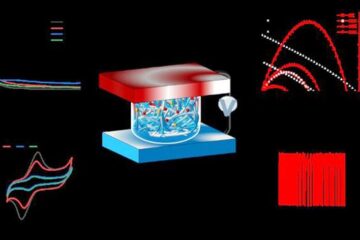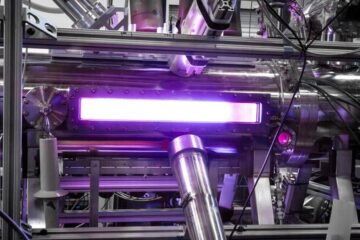LCSB researchers characterise a new tumour syndrome

The ARMC5 gene was discovered by independent workgroups studying benign tumours – so-called adrenal adenomas – in connection with Cushing’s syndrome. In this disease, the body produces too much of the hormone cortisol. Now, for the first time, a mutation of ARMC5 has been characterized as the cause behind the growth of meningeal tumours.
The results on this tumour syndrome, obtained by the group of Dr. Patrick May and PD. Dr. Jochen Schneider together with colleagues from Charité Berlin (Dr. Ulf Elbelt) and the Universities of Würzburg (Prof. Dr. Bruno Allolio) and Cologne (Dr. Michael Kloth), have been published recently in the “Journal of Clinical Endocrinology Metabolism” ( DOI: http://dx.doi.org/10.1210/jc.2014-2648).
Cortisol is an important hormone. It influences many metabolic pathways in the body and has a suppressing effect on the immune system. Accordingly, it is commonly employed as an anti-inflammatory medication. Prolonged, elevated levels of cortisol in the body can lead to obesity, muscular dystrophy, depression and other symptoms.
To maintain the correct concentration in the blood, the body has a refined regulation system: Certain areas of the brain produce the hormone corticotropin as a stimulator of cortisol release; the actual formation of cortisol takes place in the adrenal glands. As the concentration of cortisol in the blood rises, the brain reduces the production of corticotropin.
In search of the causes of Cushing’s syndrome, scientists recently encountered certain genetic causes of benign tumours of the adrenal cortex. Growth of these adrenal cortex adenomas is based on a combination of hereditary and spontaneous mutations: It affects people in whom one of two “alternative copies” – one of the so-called alleles – of the ARMC5 gene is mutated from birth.
If the second allele of ARMC5 later also undergoes a spontaneous mutation in the adrenal cortex, then the gene no longer functions. “What is interesting is that the failure of ARMC5 has no direct influence on cortisol production. However, because the tumour cells multiply faster than other body cells, and the number of cells in the tumour increases, the blood cortisol level rises in the course of the disease”, says Dr Schneider. Then, the cortisol level in the body rises and ultimately results in the onset of Cushing’s syndrome.
When other scientific workgroups discovered that further benign tumours – in this case meningeal tumours – occur more often in ARMC5-Cushing families, the group of Patrick May and Jochen Schneider sequenced the ARMC5 gene and studied it using bioinformatic techniques. “We demonstrated for the first time, in a patient with an adrenal cortex tumour and simultaneously a meningeal tumour, that somatic, that is non-hereditary, ARMC5 mutations are present in both tumours. This observation suggests that ARMC5 is a true tumour-suppressor gene.”
It must now be explored, Schneider continues, to what extent patients with adrenal cortex tumours ought to be screened for simultaneous presence of meningioma, and in which other types of tumour ARMC5 mutations are responsible for tumour growth: “Building upon that, we can learn whether the gene and the metabolic pathways it influences offer new approaches for treating the tumour syndrome.”
http://press.endocrine.org/doi/abs/10.1210/jc.2014-2648 – Link to the publication
http://wwwen.uni.lu/lcsb/news_events/cushing_s_syndrome_lcsb_researchers_charact… – Link to the pressrelease
http://wwwen.uni.lu/lcsb – Link to the LCSB
Media Contact
All latest news from the category: Life Sciences and Chemistry
Articles and reports from the Life Sciences and chemistry area deal with applied and basic research into modern biology, chemistry and human medicine.
Valuable information can be found on a range of life sciences fields including bacteriology, biochemistry, bionics, bioinformatics, biophysics, biotechnology, genetics, geobotany, human biology, marine biology, microbiology, molecular biology, cellular biology, zoology, bioinorganic chemistry, microchemistry and environmental chemistry.
Newest articles

Superradiant atoms could push the boundaries of how precisely time can be measured
Superradiant atoms can help us measure time more precisely than ever. In a new study, researchers from the University of Copenhagen present a new method for measuring the time interval,…

Ion thermoelectric conversion devices for near room temperature
The electrode sheet of the thermoelectric device consists of ionic hydrogel, which is sandwiched between the electrodes to form, and the Prussian blue on the electrode undergoes a redox reaction…

Zap Energy achieves 37-million-degree temperatures in a compact device
New publication reports record electron temperatures for a small-scale, sheared-flow-stabilized Z-pinch fusion device. In the nine decades since humans first produced fusion reactions, only a few fusion technologies have demonstrated…





















